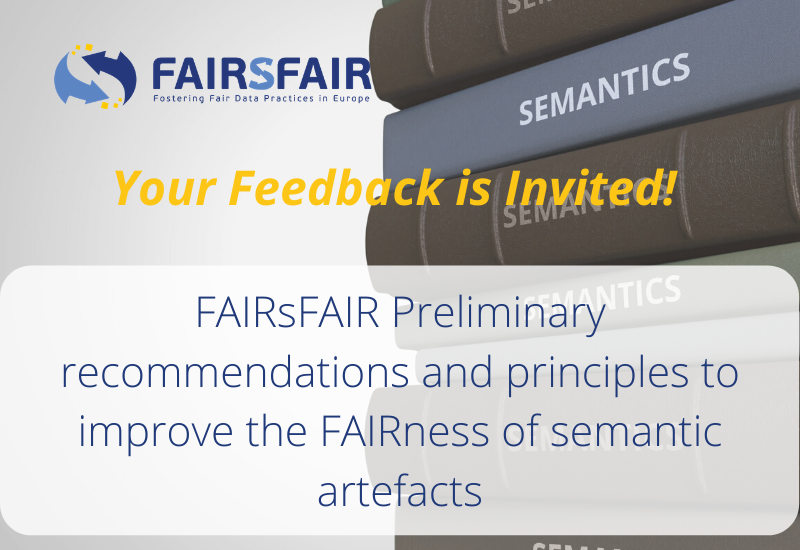FAIRsFAIR Preliminary recommendations and principles to improve the FAIRness of semantic artefacts now open for comments.

FAIRsFAIR has published D2.2 FAIR Semantics: First recommendations, a document to support discussion with the semantic community at large.
First iteration of what will become a set of guidelines for creating FAIR semantic artefacts, these recommendations result from a organised by FAIRsFAIR during the 14th RDA Plenary meeting in Helsinki and attended by representatives from data infrastructures, research institutes and libraries across Europe.
Semantic artefacts defined
Semantic artefacts are machine readable models of knowledge such as controlled vocabularies, thesauri, and ontologies which facilitate the extraction and representation of knowledge within data sets using annotations or assertions. In past decades, semantic artefacts have been developed in isolation without thought for interoperability and reusability, and semantic silos have been created. To ensure that digital assets are Findable, Accessible, Interoperable, and Reusable for both machines and humans and across disciplines and other silos. There is thus a clear need to harmonise practices around the development and usage of semantics in representing and describing information and knowledge. This is the purpose of the recommendations.
Semantic artefact spectrum. Derived from Leo Obrst, 2010
Recommendations
The report proposes a total of 17 preliminary recommendations, each related to one or more of the FAIR principles, and a further 10 general principles aimed at improving the overall FAIRness of semantic artefacts. Each recommendation is presented with a short description offering some context and explanation to support further discussion. Similar, existing recommendations are then cited so as to facilitate investigations of potential overlaps and synergies. Finally, the stakeholders are identified.
The complete list of recommendations appears below.
|
Use Globally Unique, Persistent and Resolvable Identifier for Semantic Artefacts, their content and their versions |
|
Use Globally Unique, Persistent and Resolvable Identifier for Semantic Artefact Metadata Record |
|
Use a common minimum metadata schema to describe semantic artefacts and their content |
|
Publish the Semantic Artefact and its content in a semantic repository |
|
Semantic repositories should offer a common API to access Semantic Artefacts and their content in various serializations for both use/reuse and indexation by search engines |
|
Build semantic artefacts' search engines that operate across different semantic repositories |
|
Repositories should offer a secure protocol and user access control functionalities |
|
Define human and machine-readable persistency policies for metadata |
|
Semantic artefacts should be compliant with Semantic Web and Linked Data standards |
|
Use a Foundational Ontology to align semantic artefacts |
|
Use a standardized description for complex logical relations |
|
Semantic mappings should use machine-readable formats based on W3C standards |
|
Crosswalks, mappings and bridging between semantic artefacts should be documented, published and curated |
|
Use standard vocabularies to describe semantic artefacts |
|
Make the references to the reused third-party semantic artefacts explicit |
|
The semantic artefact should be clearly licenced for machines and humans |
|
Provenance should be clear for both humans and machines |
Next Steps
The FAIRsFAIR Work Package 2 team will pursue a variety of avenues to obtaining feedback and comments from the scientific community on the initial recommendations tabled in the report. They have three main objectives:
- Gather and document use-cases to test the recommendations,
- Adapt and use existing tools (such as FAIR Metrics) to evaluate the FAIRness of a large number of semantic artefacts and establish a baseline,
- Align their work with the outcomes of the RDA FAIR Maturity Working Group (FAIR Maturity Indicators).
The first of numerous information gathering sessions took place on 2 April 2020 in the form of a webinar entitled “Moving toward FAIR Semantics” and coordinated by the RDA Vocabulary Services Interest Group.
To access the report on ZENODO click here.
To provide comments please access the Google doc here.
